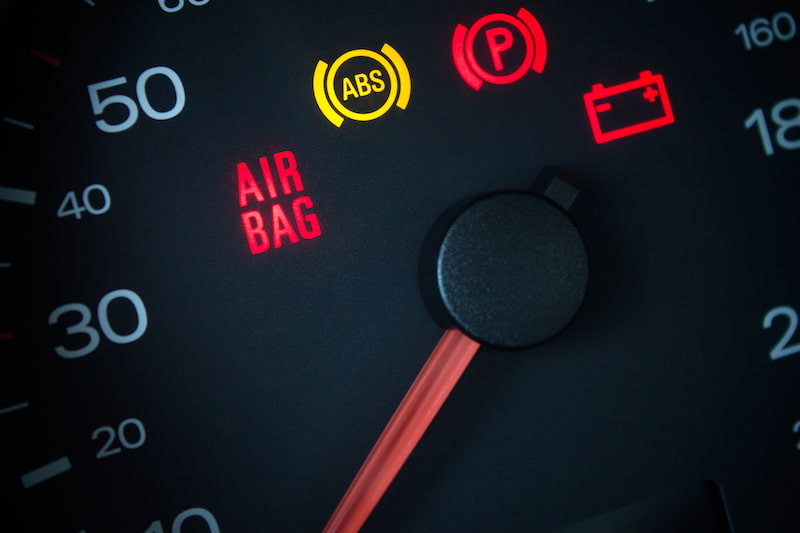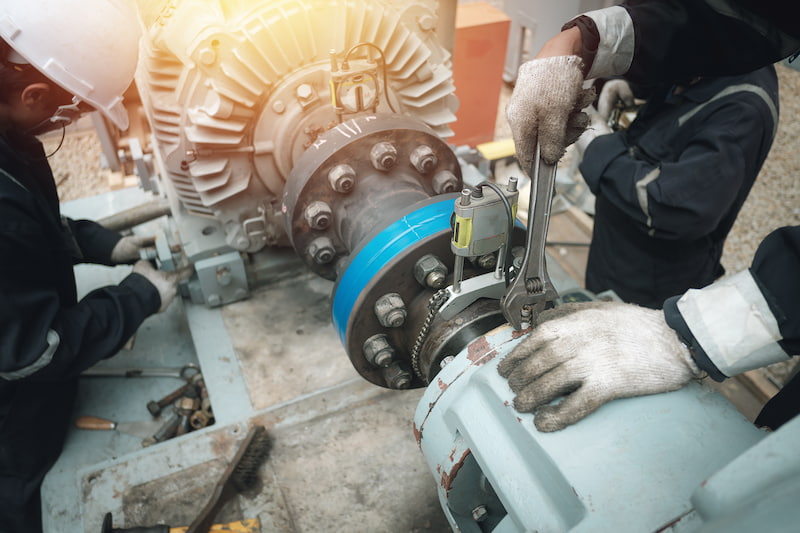Design for Maintenance is a subset of the Design for Excellence (DFX) philosophy. The philosophy considers the fact that product design can have a considerable influence over the life cycle aspects of a product such as manufacturing, assembly, reliability, sustainability, and so on.
By accounting for these factors in the early stages of the design process, we can prevent costly problems through easy and cost-effective solutions.
In this article, we take a look at Design for Maintenance and how using certain ground rules can help us ensure optimum product maintenance.
What Is Design for Maintenance?
Design for Maintenance (or Design for Maintainability) is a philosophy that aims to reduce the difficulties and costs associated with maintaining products. A maintenance-centric design takes into consideration the operation and future maintenance of products. This ensures that we can meet maintainability objectives in a quick, easy and affordable manner.
The focus on maintenance can start from the design stage itself.
Any product’s design has a significant influence on its maintainability. By taking an interdisciplinary approach between function, cost, complexity and maintenance, we can achieve a product design with better lifecycle performance with only a small uptick in initial investment.
Key Benefits
The key benefits of applying design for maintainability principles are as follows:
-
Lower costs
-
Fewer mistakes
-
Reduced downtime
-
Safer maintenance tasks
-
Easier troubleshooting and repair
-
Time savings (faster disassembly, rectification and assembly)
Let us take a look at some of the popular principles that can help us achieve the above benefits.
Design for Maintenance Principles
Many of the design principles should not be new to those familiar with other DFX techniques, such as Design for Assembly (DFA), Design for Manufacturing (DFM), etc. But there are definitely some unique angles on how these principles are applied to simplify maintenance.
The ten most popular principles are as follows:
-
Standardisation
-
Modularisation
-
Accessibility
-
Malfunction Annunciation
-
Weak link design
-
Easy identification
-
Efficient packaging
-
Use of quick fasteners
-
Safety by design
-
Use of standard interfaces
Standardisation
Standardisation refers to the use of standard components when designing products. These could be something as simple as fasteners such as nuts and bolts or complex parts such as VFDs used for controlling motor speeds.
By using standard equipment, maintenance tasks become much more affordable as these components are usually manufactured at economies of scale which reduces their individual costs.
For instance, there are tens of brands that produce smartwatches with a standard dial size of 1.78″ because this is a size that can be procured easily and affordably from the market.
Standard parts also prevent confusion and errors as the technicians are familiar with their use and areas of application.
Modularisation

Modularisation refers to the design of a component using subcomponents that are interchangeable when a defect occurs. All the subcomponents are self-contained.
Having a well-modularised product allows maintenance technicians and engineers to replace faulty parts without affecting other components. Moreover, only the faulty components need to be swapped which also reduces the maintenance cost and time.
A good example of efficient modularisation can be seen in industrial electrical systems where many self-contained parts such as relays, contactors, and fuses combine with field devices such as motors, actuators, valves, fans, sensors, dampers and VFDs.
Whenever a fault develops, due to efficient modularisation, the fault can be isolated easily and rectified by only replacing the faulty detachable modules.
Accessibility
Parts that are designed to be maintained must be within easy access of engineers and technicians. They must also have enough space around them to allow the movement of tools such as torque spanners and hammers without obstruction.
Faults usually give enough weak signals before breakdown. Sufficient space around equipment also allows for constant checks on the equipment which is important for a condition monitoring program.
Similarly, these parts should not require the removal of other parts as far as possible to increase the ease with which they can be separated from the system when performing repair.
Malfunction annunciation

When a product breaks down, a lot of time is sometimes spent on fault-finding. This is seen especially in electrical systems. The troubleshooting can take much longer than the rectification.
As far as possible, the system must be able to inform the technician of the fault. An example of malfunction annunciation can be seen in modern washing machines where the display shows different error codes or symbols for different faults.
The technicians can easily identify the fault by referring to the product manual. This increases the efficiency of maintenance by reducing the cost and time associated with the process.
Weak link design
All systems and products can be designed with a weak link that is the first to fail in the event of a fault. The simplest example of such a weak link is a fuse in an electrical system.
When an electrical fault occurs, the fuse blows and prevents the fault from harming any other component. It acts as both a failsafe mechanism, preventing damage to more expensive and difficult-to-replace components, and a maintenance point to bring the system back online.
But care must be taken to ensure that the weak link is easy and quick to replace and relatively cheap.
Easy identification
Easy identification can save a lot of time, especially in complex systems with many similar-looking components.
As far as possible, the naming convention for the different parts must be simple and memorable. In the case where there are too many components, a uniform system must be followed throughout the system for ease of understanding.
An excellent example of systematic naming conventions can be seen in large electrical systems. For instance, if you take a look at a ship’s electrical plan, you will see that it has hundreds of pages of interconnecting equipment that can become very difficult to track without a reliable system.
As a result, each page of the electrical plan is divided into columns (and sometimes rows) and the components are named as per their position in the electrical plan.
For instance, if a motor’s wiring diagram is present on page 25 in column no. 2, the motor is named M252 for instant access to the diagram in the case of a fault. A physical tag having the same number is placed on the motor. The technician can instantly access the motor diagram without having to sift through hundreds of pages.
- Personal account manager
- Quality assurance
- Payment terms for companies
- On-time delivery by Fractory
Efficient packaging
We can also use packaging to improve the rate of maintenance. All the components required for carrying out a certain maintenance task can be collected and packed together to expedite the activity.
This prevents loss of time in looking for components and tools when the maintenance is underway.
An example of functional packaging can be seen in the way centrifugal separator maintenance kits are provided. Whenever a bowl cleaning procedure is to be carried out, the technician removes the maintenance kit supplied by the manufacturer. The kit contains all the O-rings, seals and fasteners required for the job in one package.
The technician can easily perform the complete maintenance and ensure that he has replaced all the parts by checking the package.
Use quick fasteners
Quick fasteners can be used in cases where there is no pressure buildup within the component, and no risk of leakage or repeated access to a component is necessary.
Quick fasteners such as press-fit panels, push-in clips, quarter-turn knobs, spring-loaded plungers, wing nuts, snap fasteners, and swell and slide latches are all very efficient in reducing the time taken to access protected components.
Safety by design

Sometimes, during maintenance procedures, the most experienced personnel can make mistakes for various reasons, such as fatigue or ambiguous instructions.
To account for these, designers can incorporate safety features into the component design to prevent incorrect positioning of critical equipment. The equipment should only be able to fit in the correct way.
This can be done by making the connection asymmetrical or through visual cues such as matching plugs and sockets by colour. This technique is referred to as mistake-proofing (poka-yoke).
A good example is your phone’s SIM card, which only fits in the correct orientation. Any other orientation will not be able to accommodate the SIM card in the slot.
Use of standard interfaces
The use of standard interfaces increases the ease of connection between components.
Technicians rarely make mistakes when handling familiar components. They are also easier to replace. Some common examples of standard interfaces are power sockets and USB connections.
Summary
Maintenance is an inseparable aspect of many products, especially in capital-intensive industries. Often, the maintenance costs over a product’s lifecycle can add up to several times the initial investment cost, especially if it has a poor design.
However, not favouring maintenance and running equipment to the point of failure can cost 10 times more than a regular maintenance programme. It is crucial that we give due consideration to the equipment’s maintainability in all stages.
This is why design for maintenance is so important. By incorporating simple, cost-effective strategies, we can develop products that are easy to maintain and ensure that they last longer and provide more value to customers.



